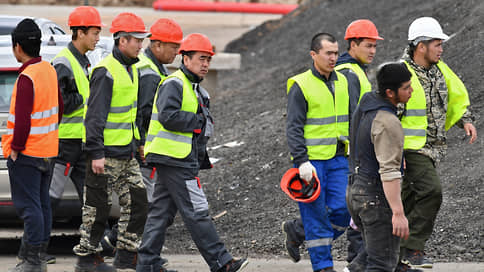Migration re-registration – Kommersant
[ad_1]

Experts from the international laboratory of demography and macrosociological dynamics of the Gaidar Institute explained the probable reason why the government in early 2023 curtailed the programs for the simplified entry of foreign workers, launched due to the shortage in the labor market. It turns out that there was no mass outflow of migrants at the end of 2021-2022, the problem was created by the peculiarities of the accounting system, and the real state of affairs did not deviate from the long-term trend.
In the April economic monitoring of the Gaidar Institute (IEP), a study of the preliminary results of international migration in 2022 was published. Their results shed light on the probable reasons why the government at the beginning of 2023 curtailed programs to facilitate the attraction of foreign workers in the Russian Federation, deployed earlier due to fears of their shortage (see Kommersant on February 14).
The data processed by the IEP show that in 2022 the number of registered migrants who came to the Russian Federation amounted to 685 thousand people against 668 thousand people in 2021 and 696 thousand people in 2019. From most CIS countries, the number of arrivals decreased last year, but almost did not change from Kyrgyzstan, and from Tajikistan it increased one and a half times – up to 184 thousand people from 127 thousand people in 2021. The IEP also notes the continued reduction in the number of participants in the resettlement program for compatriots, who in recent years accounted for a significant part of the migration increase, from 108.5 thousand people in 2019 to 62 thousand people in 2020, 78.5 thousand people in 2021 year and 64.8 thousand people in 2022. However, in 2022, compared to 2021, the number of temporary residence permits issued to foreigners increased by 20,000 (174,000) and the number of initially issued residence permits (286,000) increased by 34,000.
The 668,000 people registered in 2022 left the country, but it is impossible to compare these figures with the figures for 2021, the authors of the study note. The fact is that in the second half of 2021, the registration deadlines for foreigners were extended due to COVID-19, and as a result, their departures were automatically recorded already in 2022, artificially underestimating the number of foreign labor in the second half of 2021 and overestimating in the first half. half of 2022. The final indicators of migration growth in 2021 turned out to be significantly higher than the actual ones (430 thousand people), and in 2022 they are noticeably lower (17 thousand) and are not comparable with each other. When averaging to eliminate the effect of the transfer of registration, the registered migration growth in 2021-2022 fits into the range of 220-230 thousand people per year, which corresponds to the trend of migration growth for ten years, except for the “covid” 2020.
As a result, the situation with recorded long-term international migration in the IEP is characterized as relatively stable, minus the fact that the distribution of migrants is shifting in favor of people from Tajikistan and, to a lesser extent, Kyrgyzstan. “It must be taken into account that a significant part of migrants does not fall into the register of long-term international migration. This is due to the fact that some of the immigrants actually live in Russia for a long time, but have a registration for a period of less than nine months, and some of the emigrants, leaving Russia, are not removed from permanent registration, ”the analysts conclude.
[ad_2]
Source link






